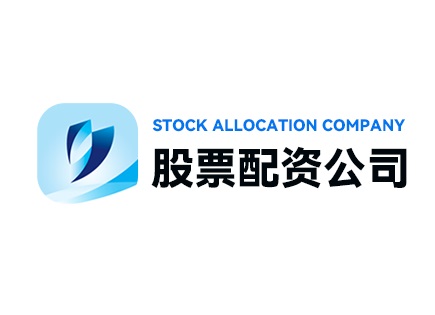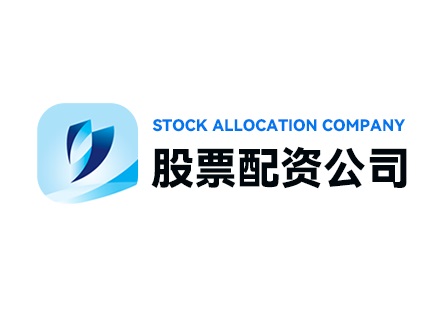 配资炒股平台_配资炒股_配资导航/配资资讯/线上股票配资开户
配资炒股平台_配资炒股_配资导航/配资资讯/线上股票配资开户
高利息股票配资:在风口浪尖上如何赌财富的未来?
Imagine this: You are sitting in a high-stakes poker game, surrounded by seasoned players who seem to know every trick in the book. But one thing is for certain—whether bluffing or betting, they all play by the same fundamental rule: the stakes are high, and the right signals can change everything. This not only applies to poker but mirrors the thrilling world of stock trading, especially when it dances hand in hand with high-interest stock financing.
First, let’s talk about trading signals. In this business, it's not just about throwing darts at a board filled with stock prices. Savvy traders often rely on technical indicators, news trends, and market sentiment to find that perfect moment to strike. Different platforms might offer varied signals, but the ones that charge exorbitantly could be at risk of losing credibility if their predictions fall flat. This brings us to the question: is a higher fee synonymous with better quality? Not always.
Now, looking at charges, let’s break down what you’re getting for your money. Several platforms may promise you the moon for a high-interest fee. However, when you dig deeper, you might find that some services offer more bang for your buck—like regular market analysis and tailored financial advice. Reviewing user testimonials and expert opinions can be valuable in navigating these decisions. According to a report from Investopedia, scrutinizing the service breakdown is crucial, as hidden fees can lead to unanticipated costs.
Next up is the lifeblood of trading:资金运转. Timing is everything in stock trading, and how efficiently your capital moves can make or break your investment. The quicker your funds can be allocated to promising stocks, the better your chances of profit. A rippling market can shift within moments, and lagging behind due to slow fund movement can cost you dearly. Some traders might find that high-interest rates actually provide faster access to these funds—an intriguing paradox.
A major component of success is effective service management. The better a trading platform optimizes its user interface and customer service, the more likely traders are to strike gold (and avoid pitfalls). When a platform is navigable and responsive, it empowers traders to act quickly—where every second counts.
Now, let’s not shy away from market fluctuations. Stock prices can swing dramatically based on a multitude of factors—the global economy, political events, and technological advancements. Understanding these dynamics can be pivotal. For instance, did you know that during times of heightened geopolitical tension, certain stocks tend to rise while others plummet? Analyzing historical trends can provide valuable insights into making timely decisions.
And let’s not forget the quintessential element:选股技巧. Mark Twain once said, 'Buy land, they aren’t making it anymore.' The same can be said about stocks: choosing the right ones is vital. Investors should look beyond the usual metrics of price-earnings ratios and dive deeper into companies' growth potential, market share, and overall health. Utilizing analytical software that predicts potential growth based on historical data can also be a game-changer.
After dissecting this intricate dance of high-interest stock financing, one thing remains clear: the road to wealth in trading is fraught with twists and turns. Each decision must—from the selection of stocks to the evaluation of financing services—be made with precision and foresight.
So, where are you on this rollercoaster? Do you prefer the thrill of high-interest stock financing, or do you tread cautiously with low-risk options? Vote below and let’s see where your trading preferences lie!
Questions for you:
1. Have you ever engaged in stock trading with high-interest financing?

2. What do you consider the most crucial factor in your trading decisions?
3. Do you think high fees correlate with better trading services?

Let’s hear your thoughts!
- 08-20福州·陈斌:股票配资的系统化操盘与风险边界
- 08-20把“配资”当放大镜:如何让股票配资变成可控的机会而不是赔钱陷阱
- 08-20杠杆与节奏:用心挑选你的配资地图
- 08-20绷紧杠杆的那根弦:铭创配资的技术、资金与回报魔方
- 08-20警方冻结背后的风控解读 | 风险管理与合规:股票配资的全景图 | 越界融资的市场信号与投资指南 | 拒绝盲目杠杆:从执法到交易的边界
- 08-20资本透明的温度:让市场更稳、更公平的行动之歌
- 08-21西安配资迷雾:拨开杠杆后的真相
- 08-20森利网:光影间的成本利刃与风控韵律
- 08-20当一倍变三倍:配资世界的放大镜效应
- 08-20配资选股的辩证对比研究:资金分配、收益稳定与市场机会评估的路径探索
- 08-21在T0平台上做梦还是干活?一场关于合规、策略与心态的市场快报
- 08-22把放大镜交给理性:一次关于股票配资的视听实操解读
- 08-21放大而不放纵:理性把握股票配资倍数与实战要点
- 08-20配资风控的艺术:低成本、时机与服务优化的实战解密
- 08-21交易席的自我修炼:选择武汉股票配资公司的实操与风控宝典
- 08-20权限·资本·脉动:掌控交易的隐形法则
- 08-21海康威视(002415):收益无绝对保证下的资金与融资博弈
- 08-20资金智慧:用众诚速配把握配资的红利与边界
- 08-21杠杆的迷雾:股票配资到底是灰色还是红线?
- 08-21免息幻象:配资股票的现金流与风险三重奏
- 08-21点亮未来的筹码:以实时反馈驱动的上海电力(600021)之路
- 08-21杠杆不等于捷径:透视股票融资利好与配资风险的多维攻略
- 08-21当配资遇上良心:看懂“推票”背后的资本与责任
- 08-20一万撬十万?把握配资的放大镜与陷阱
- 08-21当“杠杆”遇上理性:看中国股票配资网官网的真相与生存智慧
- 08-21海油工程600583:从用户管理到选股策略的因果图谱
- 08-20被忽视的金色入口:在手机里看清淘配网的真相
- 08-21拆开股市配资的魔术盒:信息、策略与风险的真相
- 08-21月光下的杠杆梦:如东股票配资的魅影与理性之光
- 08-21首航高科:从资金流到市场脉动的全景策略解码
- 08-21安全边界的杠杆艺术:配资股网中的风险、机会与监控的因果分析
- 08-20钟声里的配资盘:从资金监测到心理博弈的交易日记
- 08-21生成式AI在金融市场的全景探针:客户反馈、监控与行情解读
- 08-20稳中求进:正规炒股配资的因果思路
- 08-20把握杠杆的温度:合规开通股票配资账户与稳健经营之道
- 08-2225522配资密码:用有限资金撬动可控回报的艺术
- 08-20盛世潮涌:透视南极电商002127的资金分配与增长之道
- 08-21把放大镜戴稳:正规配资炒股的理性之道
- 08-21把放大镜递给未来:用资生网看清股票配资的机会与陷阱
- 08-21放大镜下的股市棋局:漯河与宁波的股票配资科普之旅
- 08-21把手机当成“擒牛宝”:配资、平台与行情的那些灵魂拷问
- 08-21当投资遇上幽默:拆解九方智投到底值不值得买单?
- 08-22风口上的资金乐章:在财富牛背后写下理性盈利的旋律
- 08-21躲过罚单、稳住仓位:一位配资玩家的实战自救课
- 08-20镜面下的杠杆:米牛配资的保障与博弈
- 08-21杠杆与节奏:股票配资、月息与资金运转的实战解读
- 08-22风控先行的配资炒股之道:在波动中实现高效收益与资产增值
- 08-20资本博弈里的自我防线:从配资对赌到理性风控的全景解析
- 08-20杠杆背后的真相:配资、利润与危险的博弈
- 08-20镜中筹码:员工认购股票一比一配资的未来试验